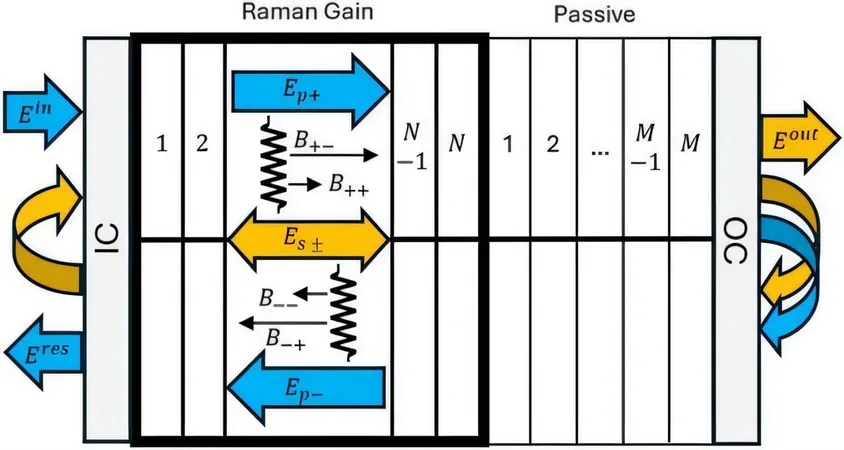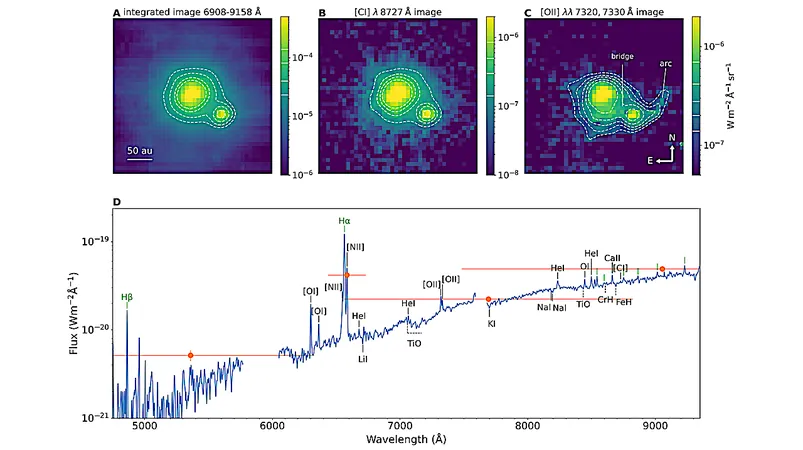
Revolutionary Raman Technique Dramatically Narrows Laser Linewidth, Igniting New Era in Quantum Computing!
2025-07-14
Author: Benjamin
Groundbreaking Research at Macquarie University
Researchers at Macquarie University have unveiled a game-changing method that shrinks the linewidth of laser beams by an astonishing factor of over ten thousand! This breakthrough holds the potential to transform fields like quantum computing, atomic clock technology, and gravitational wave detection.
Harnessing the Power of Diamond Crystals
Detailing their findings in the prestigious APL Photonics journal, the team utilized diamond crystals alongside the Raman effect—where laser light triggers vibrations within materials, resulting in scatter—to achieve this remarkable reduction in linewidth.
The Importance of Laser Linewidth
Laser linewidth is crucial; it gauges how consistently a light beam maintains its frequency and color purity. A tighter linewidth means a more monochromatic and spectrally pure laser, elevating the potential for a myriad of applications.
A Leap Beyond Traditional Methods
Lead researcher Professor Richard Mildren explained that conventional techniques, such as Brillouin lasers that utilize sound waves, only manage modest reductions—by tens or hundreds of times—making the new Raman scattering method’s effectiveness thousands of times better.
A Massive Reduction in Noise
Professor Mildren emphasized that this research marks a pivotal advancement in laser technology. Their diamond crystal experiments achieved an impressive narrowing from a noisy input beam to a detection limit of just 1 kHz, representing a staggering reduction factor exceeding 10,000.
Future Potential for Ultra-Narrow Lasers
Co-author Professor David Spence shared that simulations indicate they could potentially narrow laser linewidth by over 10 million times with further design variations. This could open doors to a world of precise lasers that are critical in the realm of quantum computers, where controlling qubits with enhanced precision is vital.
Applications That Could Change the World
The implications are vast—from enhancing atomic clocks that support GPS technology to enabling groundbreaking discoveries in physics. In astronomy, narrow linewidth laser beams could increase the sensitivity of gravitational wave detectors, potentially capturing faint signals from cosmic events.
Next Steps in Pioneering Laser Technology
While this research lays a solid foundation by demonstrating concept validity, Professor Mildren and his team are now focused on refining cavity designs and active stabilization systems to combat vibrations that can cause linewidth broadening over time.
This pioneering work places Macquarie University at the forefront of laser technology, promising significant advancements that could propel various scientific fields into uncharted territory.









 Brasil (PT)
Brasil (PT)
 Canada (EN)
Canada (EN)
 Chile (ES)
Chile (ES)
 Česko (CS)
Česko (CS)
 대한민국 (KO)
대한민국 (KO)
 España (ES)
España (ES)
 France (FR)
France (FR)
 Hong Kong (EN)
Hong Kong (EN)
 Italia (IT)
Italia (IT)
 日本 (JA)
日本 (JA)
 Magyarország (HU)
Magyarország (HU)
 Norge (NO)
Norge (NO)
 Polska (PL)
Polska (PL)
 Schweiz (DE)
Schweiz (DE)
 Singapore (EN)
Singapore (EN)
 Sverige (SV)
Sverige (SV)
 Suomi (FI)
Suomi (FI)
 Türkiye (TR)
Türkiye (TR)
 الإمارات العربية المتحدة (AR)
الإمارات العربية المتحدة (AR)